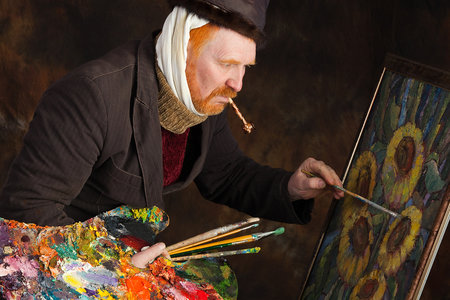
The belief that certain drugs or alcohol enhance creativity has been around for centuries. Beethoven and Van Gogh had exceptional talent and were alcoholics. During the 1960’s psychotropic drugs were often taken by musicians to expand their mind and inspire creativity. Even today, Silicon Valley tech workers are justifying the use of microdoses of LSD to facilitate productivity and creativity.
It is certainly likely that illicit drugs can lead to original thinking due to disinhibition associated with the drugs’ use, and artists often use them to overcome stage fright or performance anxiety as well. Drug use, however, can eventually impair the artist, rendering him unable to practice his craft without the continued use of more drugs or alcohol.
In particular, heroin increases the flow of dopamine to the brain resulting in pleasurable feelings. Eventually, the abuser will build up a resistance to heroin, requiring increasing and more frequent doses to achieve the same pleasant feelings. In time, the addict will lose the ability to experience pleasure from normal artistic endeavors. Such was the case with famous heroin overdose deaths like Janis Joplin, Jim Morrison, John Belushi, and Sid Vicious.
Other artists died prematurely due to causes exacerbated by their drug and alcohol abuse like Jerry Garcia, Whitney Houston, Elvis Presley, and Ernest Hemingway. Each one of these artists, and many others, eventually found their creativity stifled. In fact, when Hemingway received the Pulitzer Prize just a few years before his suicide, he remarked in his speech that the writer “…grows in public stature as he sheds his loneliness and often his work deteriorates.” At the time of Whitney Houston’s death, she was attempting to stage a comeback after a number of years of poor performances. Jerry Garcia’s mental and physical health had been in decline for several years before he died of a heart attack after checking into rehab again in 1995.
Creatives are unique and admirable for their special qualities. They like to take risks, they think big and are nonconformist, they like to daydream and consider the possibilities, and they are keen observers of people and life and are willing to open themselves to new experiences. These are the qualities artists need in order to write, paint, and perform. For the artist who succumbs to the lie that drugs and alcohol will heighten her creativity, she will find in time their talents stole away by addiction. To become and remain a successful artist, it takes discipline and thousands of hours of hard work. It’s difficult to motivate yourself to work when in the throes of an addiction.
If you need to foster your creativity, you will find healthier and more effective proven methods by getting outside in nature, switching up the time of day that you normally work, changing the environment that you work in, spending some time in a different creative interest, taking time for rest and exercise, and using your natural curiosity to learn something new. And if you are an artist struggling with addiction, it’s imperative you receive treatment. Make the call to get the help you need to live the healthy, creative life you deserve.